If there is one major lesson that the Modi government must learn from the controversy surrounding the Pathankot terror strike is this: get the perception management model right! In the age of social media dominance and 24-hour television channels, hungry for smallest of trivia, no counter-terror operation can be deemed to be successful if the government cannot get its messaging right. A week after Pathankot came under attack it is increasingly becoming clear that despite preventing a catastrophic Mumbai-kind of carnage, the popular perception among a large section of the population is that the government and specifically National Security Adviser (NSA) Ajit Doval botched up the operation. Many post-event analyses will focus on the NSA’s style and his functioning but the fact is, when a specific intelligence made it clear that the Pathankot Air base is the target, quick decisions had to be taken without wasting any time, which the NSA took. Consider this:
Information pieced together from multiple conversations I have had with security officials also indicates excellent coordination at the field level, although many half-baked and ill-informed reports have appeared to the contrary.
Although there were generic intelligence reports about infiltration of terrorists into Punjab since the evening of December 31, 2015, the actual story begins post-lunch on New Year's Day when the general intelligence got crystallised into a specific alert that the target definitely is the Pathankot air base. This is what happened in rapid succession after that:
Doval convened a meeting to decide on the next course of action. In attendance were the Army chief, General Dalbir Singh Suhag, the Air Force chief, Air Marshal Arup Raha, and chiefs of intelligence agencies. In an hour, the meeting concluded with specific tasks allotted to each stakeholder. Army moved nine columns (nearly 1,000 men) from nearby cantonments into the Pathankot airbase.
The National Security Guard was told to get ready with two teams to be flown out from Manesar near Delhi as soon as possible.
The Army troops were told to secure the air assets in the technical area (fighter aircraft, helicopters, missiles, ammunition dump, etc) and guard the residential quarters that house nearly 3,000 families within the base.
In Delhi NSG teams emplaned for Pathankot by 6 pm. They were being pre-positioned in case any hostage situation developed or the terrorists got into houses or built-up areas. Within six hours of the specific intelligence being received, precautions were taken, forces deployed and assets protected. The criticism that the operation took too long is a matter of opinion. If the terrorists were neutralised without losing any further men, it is to the credit of the security forces and their coordination on the ground, notwithstanding the time they took. Would it have been better to lose more men and end the operation five hours earlier?
The key was to take quick decisions. In the absence of key ministers like Rajnath Singh (home) and Manohar Parrikar (defence) from the capital on January 1, there was no time to lose or to wait for a meeting of the Cabinet Committee on Security (CCS) to take place.
Instant decision had to be taken, which was done by the NSA in consultation with the key stakeholders. The rights and wrongs of that decision can be debated but Doval must be commended for taking the initiative. Moreover, the terrorists were eliminated before they could achieve their key objective of destroying the air assets or take hostages in the base.
More worrying however is the ease with which the terrorists slipped passed border defences. Ever since the infiltration and attack took place in Gurdaspur district last July, the Border Security Force (BSF) and the Punjab Police should have been on their toes, tightening border control, stepping up intelligence gathering and tightening security all over the state. Unfortunately, the BSF has failed to prevent infiltration. The role of the Punjab Police SP, who was apparently abducted and let off by the terrorists also needs to be probed thoroughly. There appears to indicate a nexus between smugglers, particularly of narcotics, and elements in the local administration.
India in the meantime has reportedly identified the chief of Pakistan-based terror group Jaish-e-Mohammed as one of the handlers of the terrorists who launched the attack. The information on Jaish chief Maulana Masood Azhar, his brother Rauf and two others has allegedly been shared with Pakistan. The Jaish-e-Mohammed was founded by Masood Azhar after he was released by India in 1999 in exchange for passengers on an Indian Airlines flight that was hijacked.
However, clear that the while the Lashkar-e-Tayiba will remain the most loyal ISI asset for terrorism in India, other jihadi groups like Jaish-e-Mohammed will also be utilised from time to time to keep them away from joining groups like the TTP, against whom the Pakistan army is presently at war. It will be naive to think that the ISI will allow Prime Minister Nawaz Sharif to take 'prompt and decisive action' against the Jaish-e-Mohammed as New Delhi has demanded and expects, although Sharif has shown his intention about reigning in the anti-India elements by handing over the probe to the appropriate authorities in Pakistan. Whether anything tangible will come out of the probe however is the moot question. A lot will now depend on whether the Pakistanis act on the information and intelligence that has been shared with them. If they do, Mr Modi’s gamble would have paid off and Pakistani action against terrorists operating against India would effect a change in the paradigm between the two countries. But if it does not happen, then it will be back to square one in the India-Pakistan tango.
Published Date: 12th January 2016, Image Source: http://www.deccanchronicle.com/
(Disclaimer: The views and opinions expressed in this article are those of the author and do not necessarily reflect the official policy or position of the Vivekananda International Foundation)

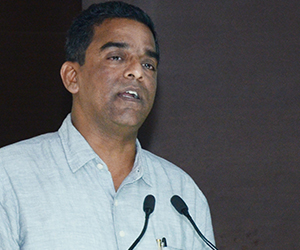


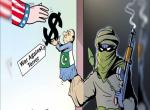
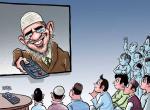
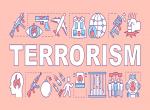
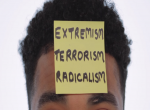
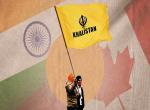
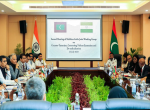
Post new comment